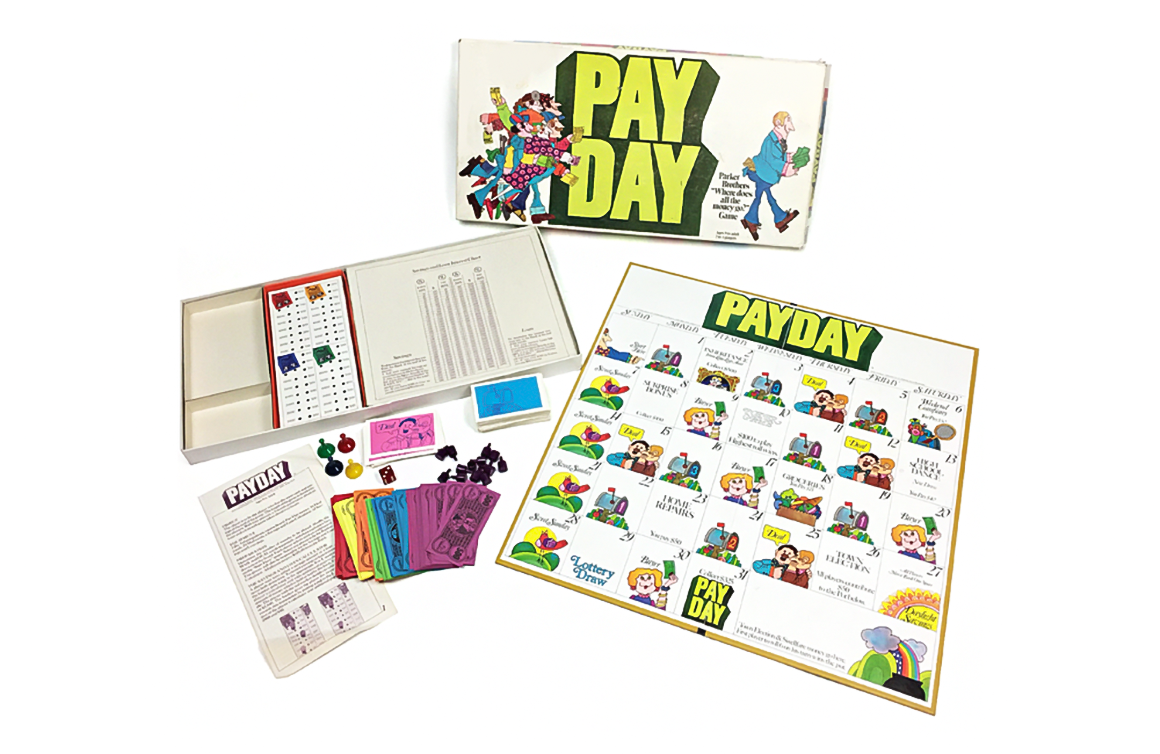Payday from Parker Brothers challenges players to make it through a month of bills, financial pitfalls, and monetary gains to be the player with the most cash at the end of the month.
Designed by Paul J. Gruen and released by Parker Brothers in 1975, the Payday board game makes adulting fun for two to four players, ages eight and older. The box – colourfully adorned with Peter Max-inspired pop-art illustrations – includes a game board designed to look like a monthly calendar, play money in $500, $150, $20, $10, and $5 denominations, blue Mail cards, pink Deal cards, four pawns, one die, savings and loans scorecards, and printed instructions.
To begin, each player is given $325. Players roll the die and move their pawns. Each day represented on the game board represents an action for players to take, such as to draw Mail cards (featuring lottery wins, bills, postcards, and junk mail); draw Deal cards (featuring items for purchase such as a powerboat, diamond ring, tractor, stereo, and other goods); observe daylight savings by moving back one step; collect money, pay money, and other real-life activities.
As the game progresses, players earn, spend, and lose money through the board-directed actions. They can also borrow money for Deals from the bank or from fellow players. The game ends once all players have made it through the month – it takes about 30 minutes. At the start of the game, players can decide to extend game-play by playing for more than one month, making multiple trips around the board. The player with the most amount of money (or least amount of debt) at the end of the 31-day calendar wins.
Payday outsold Monopoly during its first year on the market. The game’s legacy lives on with a modernized version of the game produced by Winning Moves.
“Where does all the money go?” Good question!
Note: If you buy something using the eBay link in this story, we may earn a small commission. Thank you for supporting independent toy journalism!

